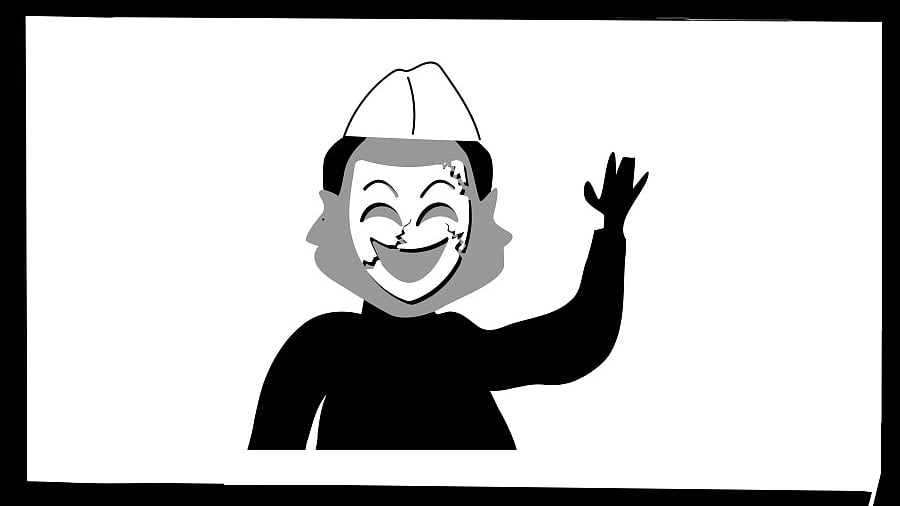
A disproportionately large number of bureaucrats and politicians with national relevance are from Bihar. Many of them have been trailblazers and can be seen working in the remotest parts of the country. The popular saying ek Bihari, sab pe bhari translates to 'a singular Bihari can outweigh all others', implying their fortitude and resilience. Historically, the likes of Chandragupta Maurya, Samrat Ashoka, and Chanakya have left an indelible imprint. The region has been a fount of wisdom with the likes of Vatsyayana and Aryabhata; profound spiritualists like Gautama Buddha and Mahavira have added incalculably to the Indian consciousness.
The world’s oldest residential university – Nalanda – was founded in the 5th Century CE and at one time had over 10,000 students from distant lands like Japan, Mongolia, China, and Myanmar. This ancient (and modern) backdrop should have lent itself to a progressive and well-developed socio-economic status for a state in independent India. Unfortunately, that is not the case, as Bihar languishes at the bottom with similarly struggling states in dealing with pertinent issues like multidimensional poverty, employment, and social inequities.
Bihar is also said to be one of the youngest states, with an estimated 57% population under the age of 25. This demographic dividend, however, is offset by the fact that Bihar also has the highest dependency ratio among Indian states. Therefore, the state is expected to prioritise serious challenges like a dearth of employment opportunities, low participation of women in the workforce, and shortcomings in sectors such as education, health, and skilling. Except, it hasn’t.
In a participative democracy, the recurrence of the election cycle offers an invaluable opportunity to evaluate alternative plans of political parties and to choose the most robust among them. But have we reached that maturity to make such informed choices amongst alternative political persuasions? Does a state like Bihar go beyond the rote, regressive, and polarising agendas of caste, religion, and regionalism? The sad answer, despite the abundance of the inherent wisdom of the land and youth centricity in politics, is that it remains stuck in a language of yesterday. If the campaign pitches, espousals, and passions surrounding the Assembly election are anything to go by, there is little hope for real transformation of the state’s governance narrative.
Ironically, this election is marked by the presence of youngsters at the helm of political groupings – from the leader of the opposition Mahagathbandhan, Tejashwi Yadav, at 35 years, to the leader of the ‘third alternative’ Prashant Kishor, at 48 years. The ruling National Democratic Alliance (NDA) is similarly sprinkled with the likes of Samrat Choudhary, at 56, and Chirag Paswan, at 43, besides a slew of retained and debutant candidates who are in their 20s, 30s, and 40s.
Flawed narratives of reform
They ought to be representing a different generational purpose. Their participation ought to fructify the maxim that when young minds join politics, old problems find new solutions. But the Indian experience shows no relevant space afforded to such generational cadres; they are often reduced to being trophy candidates, only to create an optical illusion of ‘youthfulness’.
Take the example of 25-year-old Maithili Thakur, a precocious singing talent who represents the so-called ‘double engine’ possibility with a BJP nomination. As an exceptionally gifted and young artiste, she has the opportunity to infuse new vision, perspective, and dynamism as a woman from the relatively backward constituency of Alinagar (Darbhanga district). But besides playing the tired card of nativism and regionalist pride, as exemplified by the name Maithili and the region of Mithila, she has suggested as “reform” the renaming of Alinagar to Sitanagar.
This barely hides the age-old attempt of societal divide-and-rule. She has also confirmed absolute compliance with her party – “I am here just to support them. I will do whatever the party orders.”
The decidedly more politically astute and experienced Chirag Paswan had promised, ahead of the 2020 poll, a grand new Sita temple. There is fiscal ridiculousness in Tejashwi Yadav’s electoral promise to guarantee each family in the state a government job. That such a move would cost at least Rs 12 lakh crore for a state with a total budget of Rs 3 lakh crore has been conveniently left unexplained. Credence was thrown to the winds as Tejashwi merrily usurped a Netaji Subhas Chandra Bose slogan with his own campaign twist, “Tum mujhe vote do, main tumhe naukri dunga” (Give me your vote, I will give you jobs).
Even someone like Prashant Kishor has promised to lift the liquor ban “within one hour” of forming the government in the state. The claims about jobs and economic growth mark a shift in poll narratives in the state. That the promised scenario requires unrealistic levels of industrial investment and growth for which there are no credible plans makes these mere empty promises by Bihar’s ‘youth’ politicians.
Irrespective of who wins the Bihar election, the practical storyline of the state is unlikely to change, as its so-called young politicians will continue pandering to more of the same, ignoring real needs and aspirations, posturing with vacuous promises of change.
(The writer is a former Lt Governor of Andaman and Nicobar Islands and Puducherry)